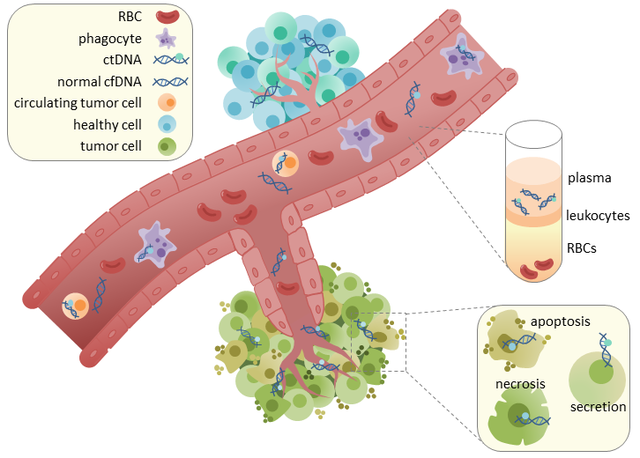DNA is short for deoxyribonucleic acid and is the building block of all life. We each have a unique set of DNA inherited from our parents. No two people (other than identical twins) will share the same set of DNA molecules.
It is a long ladder-like molecule found in every cell of the body and is made up of an alternating sequence of nucleotides (adenine, thymine, cytosine and guanine). Adenine will always pair with thymine and cytosine with guanine. They form a repeating sequence of pairs along the length of the molecule and it is this sequence that is unique to each person.
It is possible for scientists to decipher the pattern of each person’s DNA; a process called gene or whole genome sequencing.
DNA in cancer cells is different; something has damaged them or caused them to change.
Sometimes, DNA molecules change through natural cell processes, sometimes they change through exposure to certain chemicals. The chemicals in tobacco smoke is a good example.
ctDNA refers to the DNA from cancer cells circulating in the blood stream.
How does ctDNA get into the blood stream
Tumour DNA can get into the blood-stream in one of three ways:
-
Apoptosis: Apoptosis is the process of natural cell death. As tumour cells die, DNA is released into the blood.
-
Necrosis: Necrosis is when something external to the cell has caused the cells to die, releasing their contents into the blood.
- Secretion: Secretion is the natural process by which contents of a cell move from the inside to the outside.
Image Source: Wikipedia
How can ctDNA be measured
ctDNA has to be extracted from the blood sample before it can be measured.
The blood sample is spun in a centrifuge to separate the red blood cells from the plasma.
Plasma contains many things and is the component of blood in which ctDNA is found.
DNA fragments from tumour cells are shorter than DNA fragments from healthy cells. Therefore, it is not possible to detect the small amounts present in the blood of women with early breast cancer.
Using the very latest technology, however, makes it possible to detect these small concentrations of tumour DNA in the blood. This would mean that breast cancer could be detected at an early stage by a blood sample.

